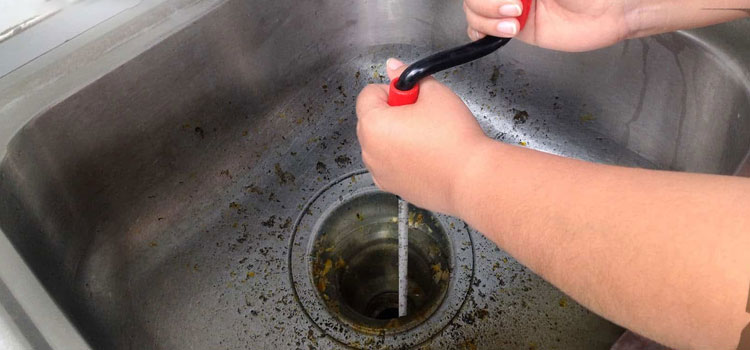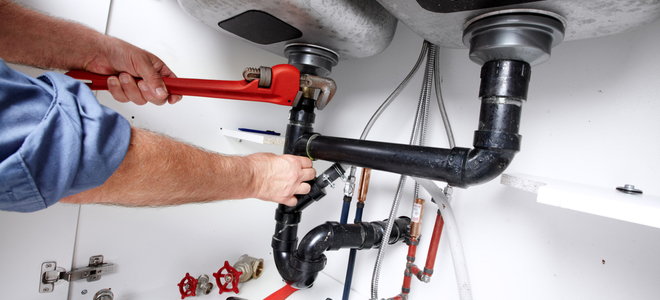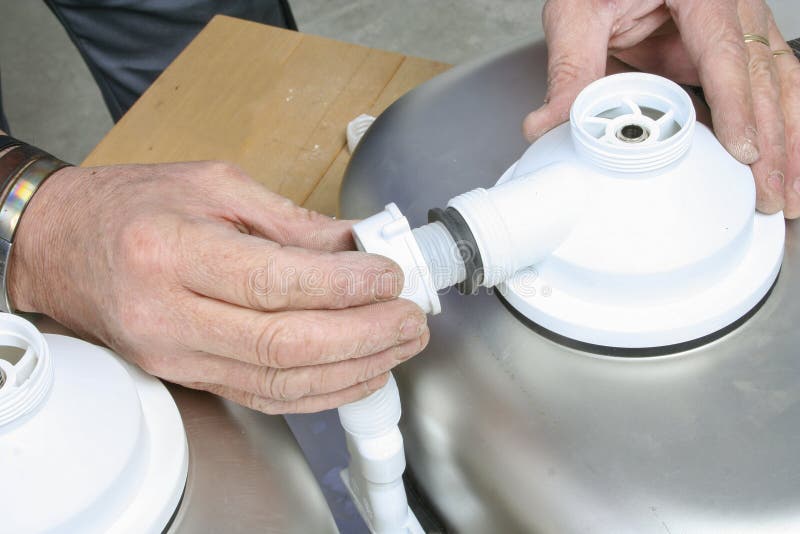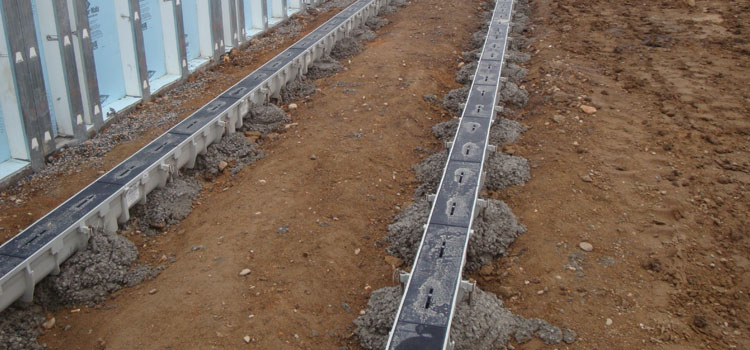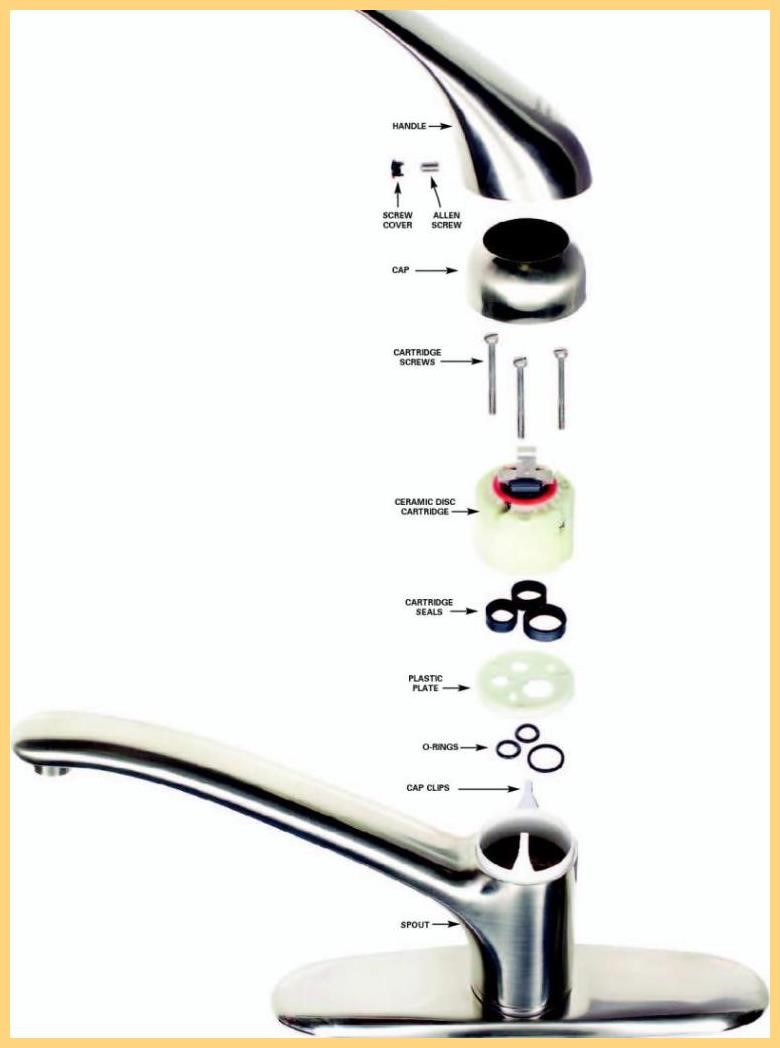Installing a kitchen sink drain may seem like a daunting task, but with the right tools and knowledge, it can be a simple and rewarding DIY project. Not only will you save money by installing it yourself, but you'll also have the satisfaction of knowing you did it on your own. Follow these steps for a successful kitchen sink drain installation.How to Install a Kitchen Sink Drain
The first step in installing a kitchen sink drain is to install the drain basket. This is the part of the drain that sits inside the sink and collects food scraps and other debris. To install the drain basket, start by placing a small bead of plumber's putty around the underside of the drain flange. Then, insert the flange into the sink drain hole and tighten the mounting nut on the underside of the sink. Make sure the drain basket is centered and level before moving on to the next step.How to Install a Kitchen Sink Drain Basket
Installing a kitchen sink drain yourself can save you a lot of money, but it's important to have the right tools and knowledge to do it correctly. Some basic tools you'll need include a pipe wrench, pliers, a screwdriver, and plumber's putty. It's also helpful to have a bucket or container to catch any water that may spill out during the installation process.DIY Kitchen Sink Drain Installation
Step 1: Assemble the drain basket by attaching the rubber gasket and cardboard friction ring to the underside of the drain flange. Step 2: Apply plumber's putty to the underside of the flange and insert it into the sink drain hole. Step 3: From under the sink, tighten the mounting nut to secure the drain basket in place. Step 4: Attach the tailpiece to the drain basket and tighten the slip nut to secure it. Step 5: Connect the P-trap to the tailpiece and the drainpipe. Step 6: Turn on the water and check for any leaks. If there are any leaks, tighten the connections until they are secure.Step-by-Step Guide for Installing a Kitchen Sink Drain
In addition to the tools mentioned above, you may also need a hacksaw or pipe cutter to cut the tailpiece and drainpipe to the correct length. You may also need a socket wrench to tighten the mounting nut and slip nuts.Tools Needed for Kitchen Sink Drain Installation
- Make sure to follow the manufacturer's instructions for your specific kitchen sink drain. - Use a level to ensure the drain basket is straight and centered. - Use plumber's tape on any threaded connections to prevent leaks. - Take your time and double check all connections before turning on the water.Tips for Installing a Kitchen Sink Drain
- Not using enough plumber's putty or using too much, which can create leaks. - Forgetting to attach the rubber gasket and friction ring to the drain flange before installing it. - Not securing connections tightly enough, which can cause leaks. - Not cutting the tailpiece and drainpipe to the correct length.Common Mistakes to Avoid When Installing a Kitchen Sink Drain
The cost of a kitchen sink drain can vary depending on the type and brand you choose. On average, a basic kitchen sink drain can cost anywhere from $20 to $50. However, if you hire a professional plumber to install it, you can expect to pay an additional $100 to $200 in labor costs.Cost of Installing a Kitchen Sink Drain
As mentioned earlier, DIY installation can save you money, but it's important to weigh the pros and cons. While hiring a professional plumber may cost more upfront, they have the knowledge and experience to ensure the installation is done correctly and can troubleshoot any issues that may arise. If you're not confident in your DIY skills, it may be worth it to hire a professional.Professional vs DIY Kitchen Sink Drain Installation
If you experience leaks after installing your kitchen sink drain, it could be due to not using enough plumber's putty or not tightening connections enough. If the drain is clogged, you can try using a plunger or a drain snake to remove any blockages. If the issue persists, it may be best to call a professional plumber for assistance. Installing a kitchen sink drain may seem overwhelming, but with the right tools and knowledge, you can successfully complete the project on your own. Just remember to take your time, follow instructions carefully, and don't hesitate to call a professional if you run into any issues. Now that you know how to install a kitchen sink drain, you can enjoy your new and improved kitchen sink! How to Troubleshoot Common Issues with Kitchen Sink Drain Installation
Why Proper Kitchen Sink Drain Installation is Important for Your House Design
/how-to-install-a-sink-drain-2718789-hero-24e898006ed94c9593a2a268b57989a3.jpg)
Ensuring Functionality and Efficiency
 When it comes to designing your dream home, every detail matters. From the color of the walls to the type of flooring, everything contributes to creating a space that is not only aesthetically pleasing but also functional. One important aspect that often gets overlooked is the
kitchen sink drain installation
. While it may seem like a simple task, it is crucial to ensure that it is done correctly to avoid any future problems.
A properly installed kitchen sink drain plays a significant role in the functionality and efficiency of your kitchen. It is responsible for draining all the wastewater from your sink, including food particles and other debris. If the drain is not installed correctly, it can lead to clogs and backups, causing inconvenience and potential damage to your plumbing system.
Proper installation
ensures that the drain functions smoothly, keeping your kitchen clean and hygienic.
When it comes to designing your dream home, every detail matters. From the color of the walls to the type of flooring, everything contributes to creating a space that is not only aesthetically pleasing but also functional. One important aspect that often gets overlooked is the
kitchen sink drain installation
. While it may seem like a simple task, it is crucial to ensure that it is done correctly to avoid any future problems.
A properly installed kitchen sink drain plays a significant role in the functionality and efficiency of your kitchen. It is responsible for draining all the wastewater from your sink, including food particles and other debris. If the drain is not installed correctly, it can lead to clogs and backups, causing inconvenience and potential damage to your plumbing system.
Proper installation
ensures that the drain functions smoothly, keeping your kitchen clean and hygienic.
Maintaining the Aesthetics of Your Kitchen
 Aside from functionality, a well-installed
kitchen sink drain
also contributes to the overall design of your kitchen. A poorly installed drain can be an eyesore, disrupting the visual flow of your kitchen. It may also cause leaks and water damage, which can lead to expensive repairs. By hiring a professional to install your kitchen sink drain, you can ensure that it is done correctly and seamlessly blends in with the rest of your kitchen design.
Aside from functionality, a well-installed
kitchen sink drain
also contributes to the overall design of your kitchen. A poorly installed drain can be an eyesore, disrupting the visual flow of your kitchen. It may also cause leaks and water damage, which can lead to expensive repairs. By hiring a professional to install your kitchen sink drain, you can ensure that it is done correctly and seamlessly blends in with the rest of your kitchen design.
Preventing Potential Health Hazards
 A
properly installed
kitchen sink drain not only ensures functionality and aesthetics but also helps to prevent potential health hazards. If a drain is not installed correctly, it can become a breeding ground for bacteria and mold, resulting in foul odors and potential health risks. By ensuring that your drain is installed correctly, you can maintain a clean and healthy kitchen environment for you and your family.
In conclusion,
kitchen sink drain installation
is a crucial aspect of house design that should not be overlooked. It not only ensures the functionality and efficiency of your kitchen but also contributes to the overall aesthetics and prevents potential health hazards. By hiring a professional for the job, you can ensure that your kitchen sink drain is installed correctly, giving you peace of mind and a beautiful, functional kitchen for years to come.
A
properly installed
kitchen sink drain not only ensures functionality and aesthetics but also helps to prevent potential health hazards. If a drain is not installed correctly, it can become a breeding ground for bacteria and mold, resulting in foul odors and potential health risks. By ensuring that your drain is installed correctly, you can maintain a clean and healthy kitchen environment for you and your family.
In conclusion,
kitchen sink drain installation
is a crucial aspect of house design that should not be overlooked. It not only ensures the functionality and efficiency of your kitchen but also contributes to the overall aesthetics and prevents potential health hazards. By hiring a professional for the job, you can ensure that your kitchen sink drain is installed correctly, giving you peace of mind and a beautiful, functional kitchen for years to come.



/how-to-install-a-sink-drain-2718789-hero-b5b99f72b5a24bb2ae8364e60539cece.jpg)


:max_bytes(150000):strip_icc()/how-to-install-a-sink-drain-2718789-hero-24e898006ed94c9593a2a268b57989a3.jpg)





















